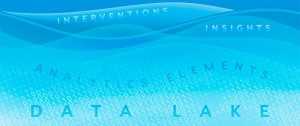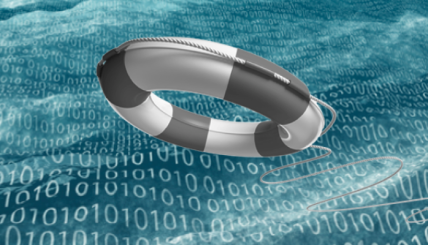As hospital leaders race to leverage growing medical data lakes, hackers have beat them to the punch
 With the global push towards putting EHRs and the unified medical record in the cloud, hospitals and clinics are finally getting on board this big data ride. EHRs (Electronic Health Records) and Patient Portal use has been rising steadily over the past three years with more and more patients having access to their medical data thru Patient Portals and mobile devices. As providers finally begin to roll out their EHR and Patient Portal programs, both patients and doctors are enjoying the new found access to the data they need to make medical decisions, and it’s literally at their fingertips. This has given the patients a new sense of ownership of their medical data and perhaps a feeling of control over their destiny – especially in an environment where ACA has left them feeling somewhat limited. In today’s connected society, medical data of all kinds are being gathered and gleaned from a myriad of sources; from EHRs to mobile device apps to telemetry at the office level and to test results of all kinds. Medical data lakes, collections of unstructured medical data, are growing and thriving; but what is the risk of this access? What are the purposes of data lakes and how can we protect them?
With the global push towards putting EHRs and the unified medical record in the cloud, hospitals and clinics are finally getting on board this big data ride. EHRs (Electronic Health Records) and Patient Portal use has been rising steadily over the past three years with more and more patients having access to their medical data thru Patient Portals and mobile devices. As providers finally begin to roll out their EHR and Patient Portal programs, both patients and doctors are enjoying the new found access to the data they need to make medical decisions, and it’s literally at their fingertips. This has given the patients a new sense of ownership of their medical data and perhaps a feeling of control over their destiny – especially in an environment where ACA has left them feeling somewhat limited. In today’s connected society, medical data of all kinds are being gathered and gleaned from a myriad of sources; from EHRs to mobile device apps to telemetry at the office level and to test results of all kinds. Medical data lakes, collections of unstructured medical data, are growing and thriving; but what is the risk of this access? What are the purposes of data lakes and how can we protect them?
Big Data and Security Concerns
With recent hack attacks on hospitals, in both the US and abroad, the need for protecting these data lakes has become critical. Just last month, in February 2016, Hollywood Presbyterian Hospital had its EHR system infected with ransomware and held hostage. In the end, the embarrassed and humbled facility had to pay the ransom to release the data. The revolution in medical data sharing and the movement toward a unified medical record in the cloud took a giant leap back that day. Hospital leaders the world over are now wondering how to best protect themselves while still moving toward the goal of using medical big data to provide precision medicine. The mostly unstructured data is ripe for the pickings for both legitimate and illegitimate reasons. Experts have put the cost of medical data breaches at $363 per record. Are the benefits worth the risk?
 The idea behind medical data lakes is to take all of the unstructured data, analyze it, to then be able to innovate and intervene. The data will point to trends and relationships that will bring overall understanding to and increase the level of patient care and health. Some data lakes are moving to a semantic model to allow for searching of data from a number of different sources at once, which is one of the largest stumbling blocks in leveraging these lakes of data.
The idea behind medical data lakes is to take all of the unstructured data, analyze it, to then be able to innovate and intervene. The data will point to trends and relationships that will bring overall understanding to and increase the level of patient care and health. Some data lakes are moving to a semantic model to allow for searching of data from a number of different sources at once, which is one of the largest stumbling blocks in leveraging these lakes of data.
6 Ways to Protect Medical Data Lakes at the Facility Level
As EHR use is finally becoming mainstream, there are some steps a hospital system can take to help alleviate the risk of a data breach or hack attack.
- Immediately conduct a risk assessment to identify and troubleshoot security risks.
- Use a cloud based EHR/EMR portal that has security, like encryption, built-in. Cloud-based EHRs tend to have a lower start-up cost than onsite systems.
- Consider hiring a Big Data Consultant, Chief Information Security Officer(CISO), or other similar expert.
- Create an action plan to implement in the event of a breach, include both top management and line level users.
- Look at additional insurance.
- Research and stay abreast of new developments.
 “While criminals will always race to exploit security weaknesses, hospitals and healthcare systems can’t let them dictate or put a stopper on innovation. If we do, nobody wins,” says David Gantshar, CEO of Merraine Group®. Merraine is the premier executive recruiting firm for solid hospital leadership. Go to www.Merraine.com for more details on building a leadership team that will protect, as well as, innovate.
“While criminals will always race to exploit security weaknesses, hospitals and healthcare systems can’t let them dictate or put a stopper on innovation. If we do, nobody wins,” says David Gantshar, CEO of Merraine Group®. Merraine is the premier executive recruiting firm for solid hospital leadership. Go to www.Merraine.com for more details on building a leadership team that will protect, as well as, innovate.
References:
-Hospital ransomware: A chilling wake-up call – February 19, 2016 by Violet Blue on www.engadget.com – http://www.engadget.com/2016/02/19/hospital-ransomware-a-chilling-wake-up-call/
-Top 5 EHR Trends for 2016 – January 7, 2016 by Cathy Reisenwitz in Medical Software – http://blog.capterra.com/top-5-ehr-trends-for-2016-2/
-Medical Insight Set to Flow from Semantic Data Lakes – August 26, 2015 by Alex Woodie on www.datanami.com – http://www.datanami.com/2015/08/26/medical-insight-set-to-flow-from-semantic-data-lakes/


